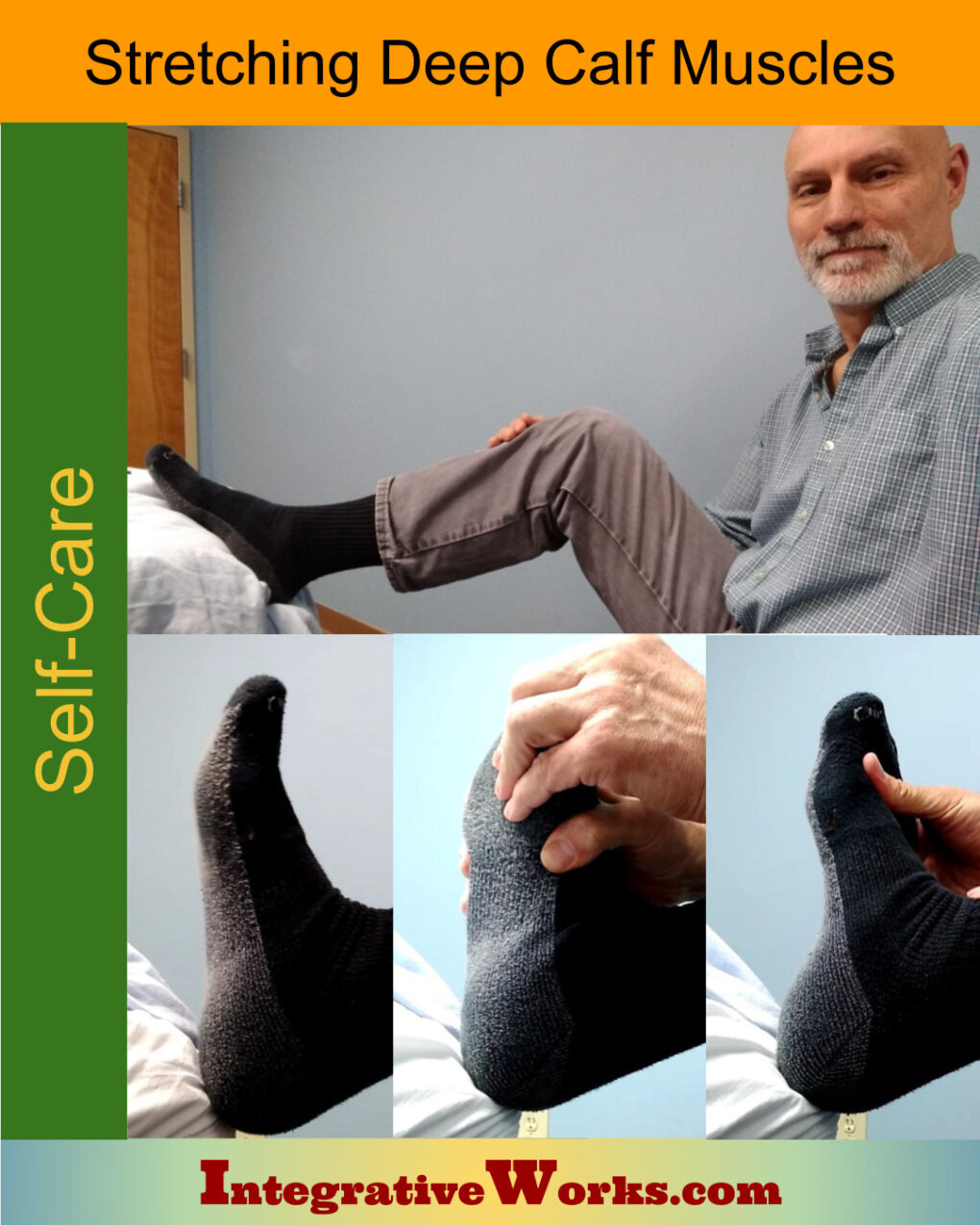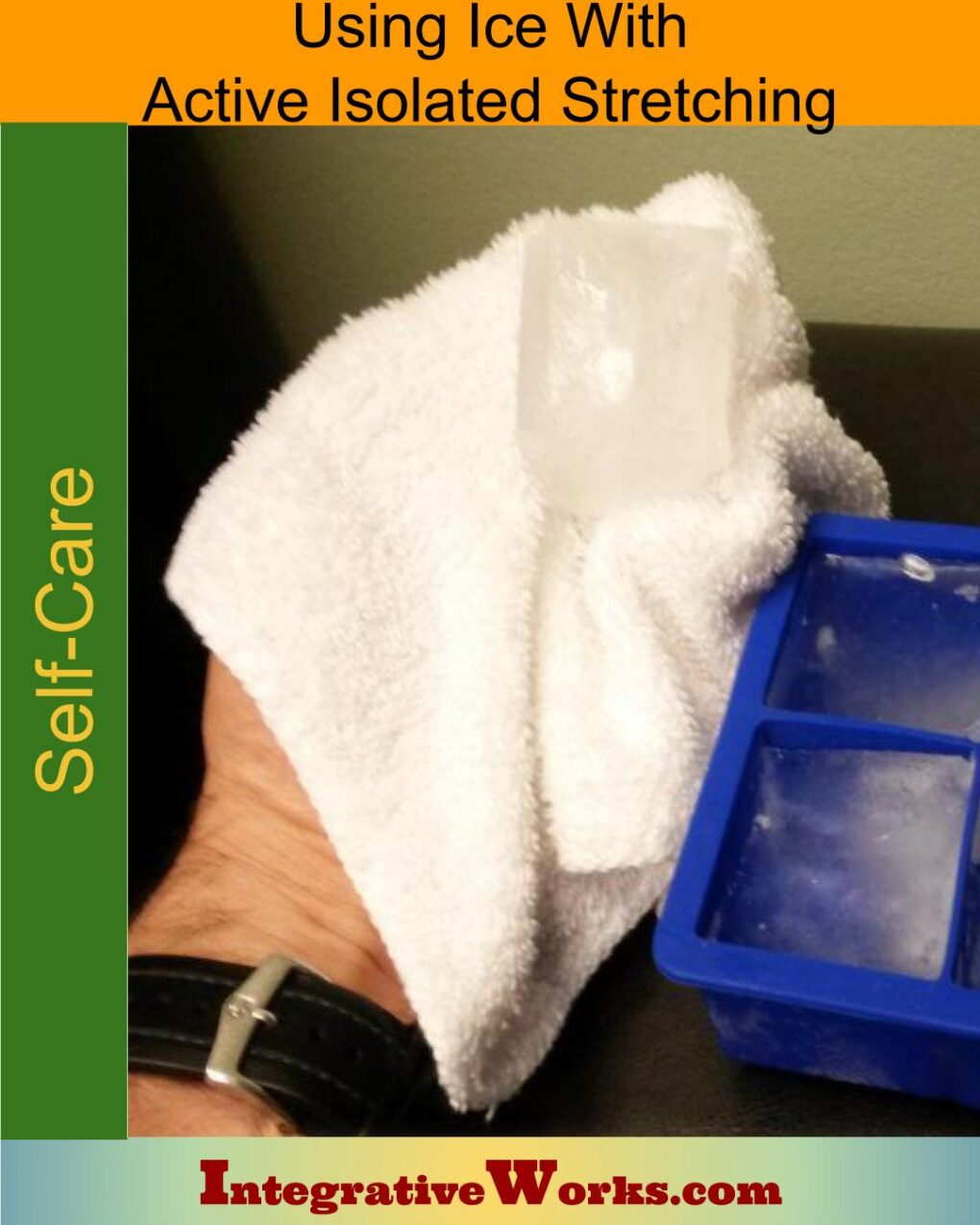Overview
Here, you will find a few short steps for stretching the deep compartment of the calf, anatomically called the “leg” or “low-leg.” This process is not rocket science, but knowing a few pointers is helpful to make it easier and more effective.
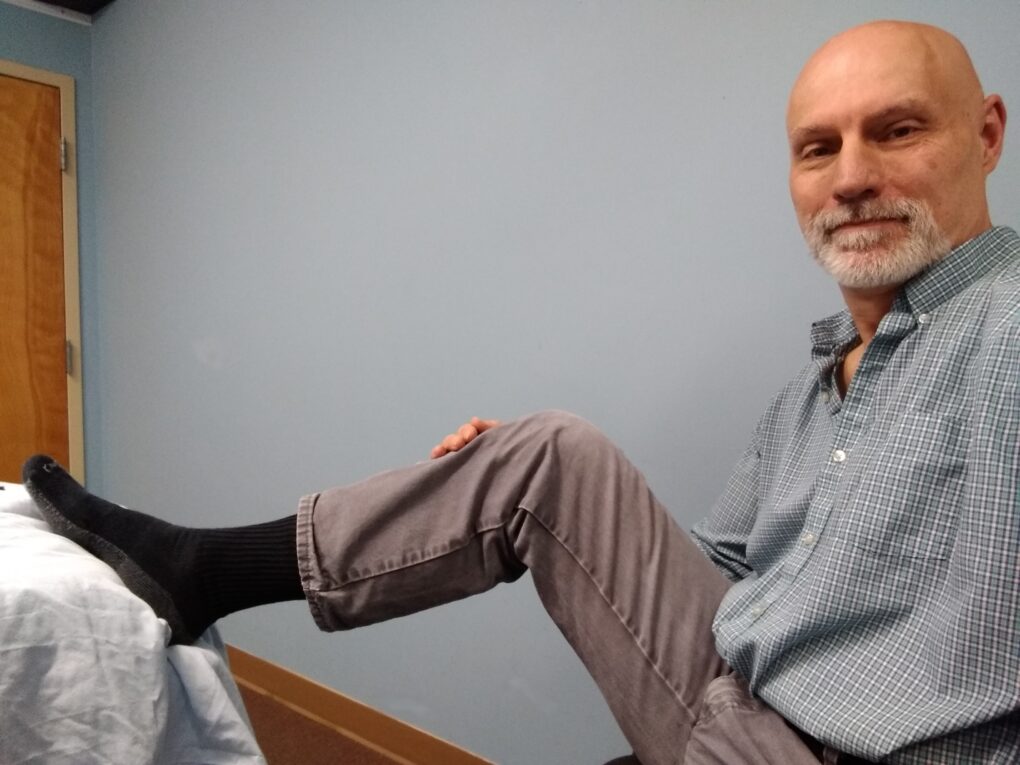
Sit
Sit down in a comfortable place where you can prop your foot on something solid. Especially, if you are older or a little heavy, you will squirm just a bit. So, get comfortable and solidly placed.
Here’s a quick selfie of me in a chair in my office. I’ve seen examples where people sit on the edge of a table with their foot under them. It is not very comfortable. Truthfully, it makes the process a little more difficult. You might even fall off the table. It can be precarious.
Bend Your Knee
It’s important that your knee is bent. This bend takes the superficial muscle, the gastrocnemius, out of the stretch. In this process, we want to catch those deep and lateral muscles:
- soleus
- tibialis posterior
- flexor digitorum
- flexor hallucis
- peroneus longus
- peroneus brevis
Ice-and-Stretch
This stretching process will work better with Ice-and-Stretch and Active Isolated Stretching. This post shows you how to stretch with less pain, less time, and more effective results. First, however, If you’d like a short review:
- Rub ice for a few seconds over the muscle. The icing quells the painful trigger point response by distracting the nerve.
- Hold each stretch gently for about 2 seconds. If you assist too much or stretch quickly, the muscle will guard and be less responsive on the next rep.
- Return between reps. Returning to the starting position will also make the next rep more responsive and less guarded.
- Usually, you can do less than half as many stretches when using Ice-and-Stretch. I usually find that 4 or 5 repetitions release the muscle.
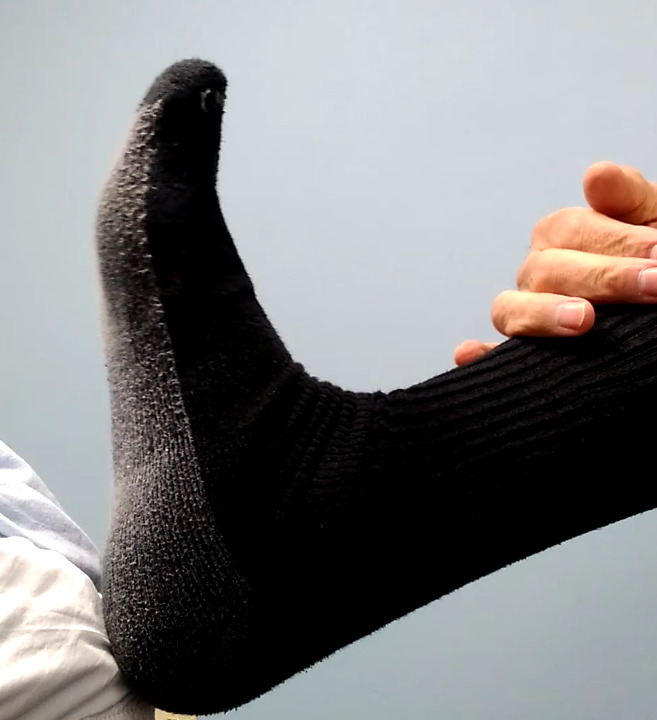
The Basic Stretch
If you're using Ice-andStretch, stroke ice along the back of the calf. For better results, stroke ice slightly above the back of the knee and onto the bottom of the heel.
Bend your ankle so that the toes move back toward your knee. Often, this is very stiff and limited in its range of motion.
If you add a little extra bend of your toes toward your knee, it will focus your stretch on the flexors of the toes. If you bend the toes the other way, it focuses on the tibialis posterior and soleus.
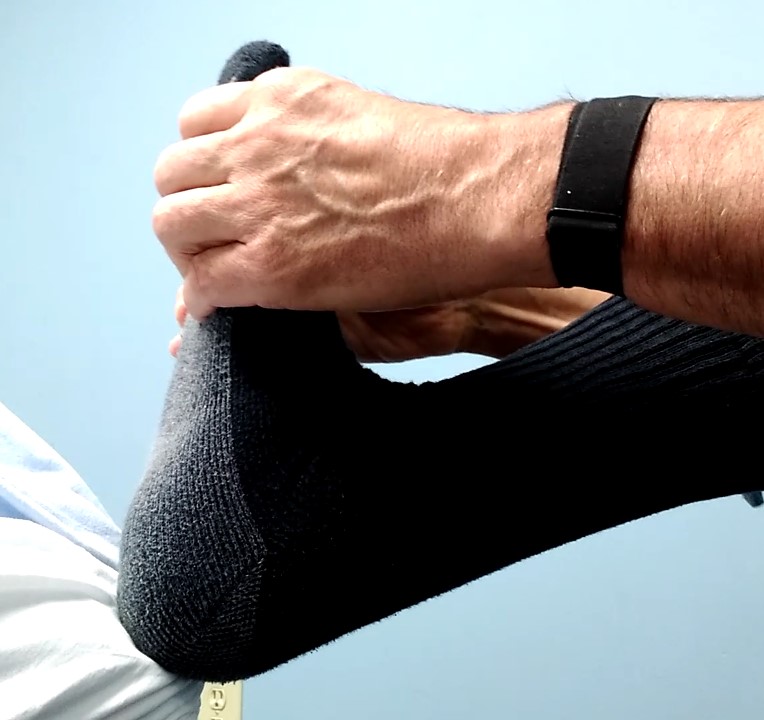
Assisting the Basic Stretch
A Few Tips
- Get comfortable. Don’t strain or lose your balance.
- Don’t assist too much. It is much more effective to have gentle, repeated stretches.
Using a Rope
You can use a rope. Wrap it around the foot, so it stays on when you assist less. With that wrap, you can pull on one side or the other to focus on specific muscles while stretching. Although this position is easier, there is a tendency to over-assist. Instead, you want to retrain the movements. If you can avoid using the rope, do.
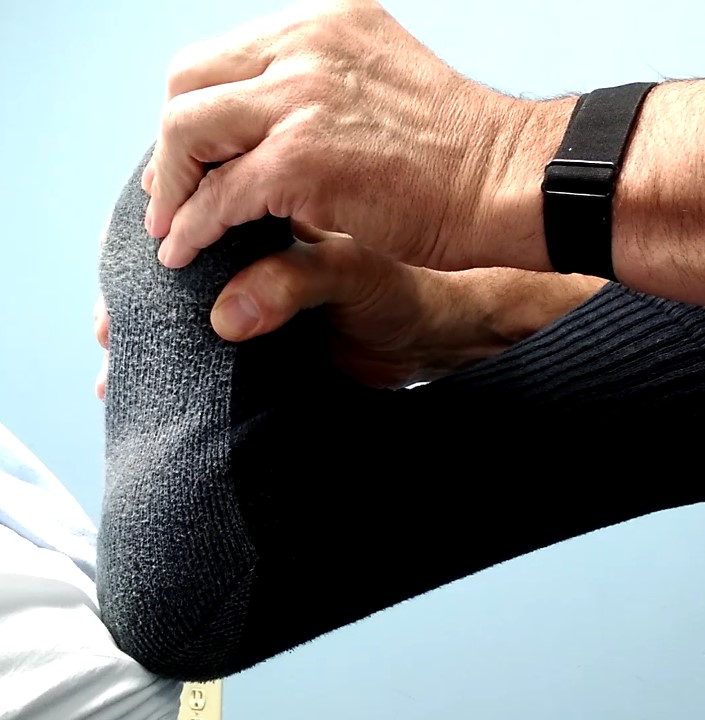
Focus on the Outside of the Calf
By turning the bottom of the foot inward (medially), you can focus on the muscle of the outside (lateral) calf.
- flexor hallucis longus
- peroneus longus
- peroneus brevis
- lateral soleus
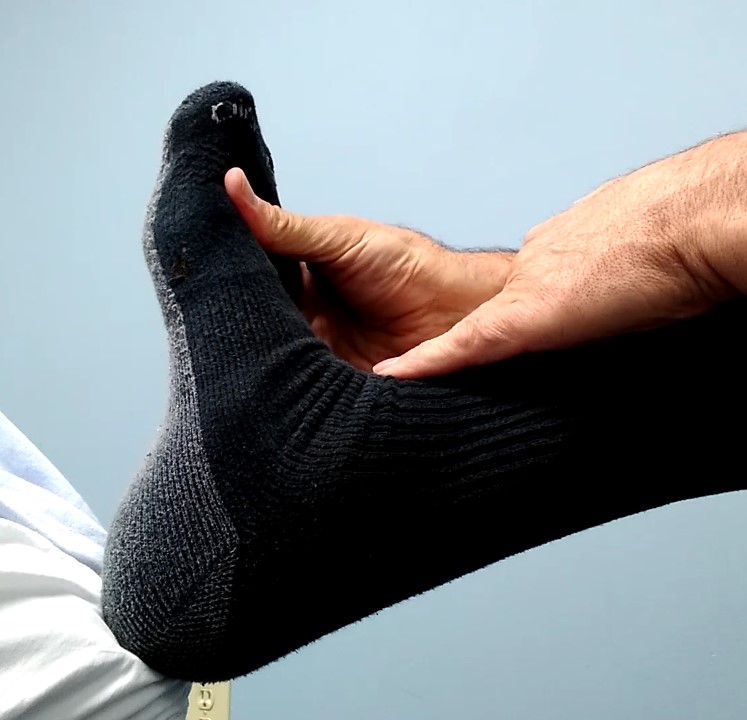
Focus on the Inside of the Calf
Turning the bottom of the foot outward (laterally) allows you to focus on the muscle of the outside (medial) calf.
- flexor digitorum longus
- tibialis posterior
- medial soleus
Final Pointers
Take your time. Don’t assist too much. If you want a better stretch, have a more extended session.
Support Integrative Works to
stay independent
and produce great content.
You can subscribe to our community on Patreon. You will get links to free content and access to exclusive content not seen on this site. In addition, we will be posting anatomy illustrations, treatment notes, and sections from our manuals not found on this site. Thank you so much for being so supportive.
Cranio Cradle Cup
This mug has classic, colorful illustrations of the craniosacral system and vault hold #3. It makes a great gift and conversation piece.
Tony Preston has a practice in Atlanta, Georgia, where he sees clients. He has written materials and instructed classes since the mid-90s. This includes anatomy, trigger points, cranial, and neuromuscular.
Question? Comment? Typo?
integrativeworks@gmail.com
Interested in a session with Tony?
Call 404-226-1363
Follow us on Instagram

*This site is undergoing significant changes. We are reformatting and expanding the posts to make them easier to read. The result will also be more accessible and include more patterns with better self-care. Meanwhile, there may be formatting, content presentation, and readability inconsistencies. Until we get older posts updated, please excuse our mess.

